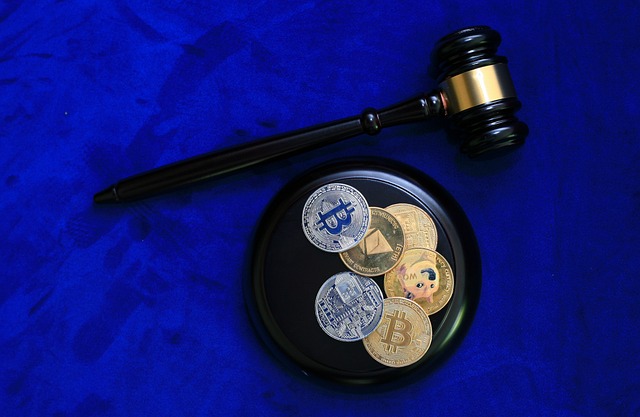Understanding Crypto Wallets: Your Complete Guide to Digital Asset Security
Author: Jameson Richman Expert
Published On: 2025-01-19
Prepared by Jameson Richman and our team of experts with over a decade of experience in cryptocurrency and digital asset analysis. Learn more about us.
The rise of cryptocurrency has paved the way for innovative financial solutions, changing the way we view money, transactions, and investments. One of the fundamental components of the crypto ecosystem is the crypto wallet. This article will explore the different types, functionalities, and best practices for using crypto wallets effectively.

What is a Crypto Wallet?
A crypto wallet is a digital tool that allows users to store, send, and receive cryptocurrencies. While the term “wallet” may imply it physically holds your coins, a crypto wallet doesn't store your cryptocurrencies like traditional wallets store cash; instead, it stores your public and private keys, which are essential for transacting digital assets on the blockchain.
Types of Crypto Wallets
Understanding the different types of crypto wallets is crucial for anyone looking to engage in cryptocurrency transactions. The primary categories include:
1. Hot Wallets
Hot wallets are connected to the internet, making them convenient for frequent transactions. They are typically offered by exchanges, mobile apps, and software applications. While they offer ease of use, hot wallets are more vulnerable to hacking and online threats.
2. Cold Wallets
Cold wallets, on the other hand, are offline and provide enhanced security. They include hardware wallets and paper wallets. Because they are not connected to the internet, they are less susceptible to cyber-attacks, making them an ideal choice for long-term holding of cryptocurrencies.
3. Hardware Wallets
Hardware wallets are physical devices that store your private keys offline. They provide advanced security features and are user-friendly. Some popular options include Trezor and Ledger. Hardware wallets are highly recommended for serious investors who want to protect their assets.
4. Software Wallets
Software wallets come in the form of mobile apps or desktop applications. They offer a balance between convenience and security. Many software wallets allow you to manage multiple cryptocurrencies and interact with decentralized applications (DApps).
5. Paper Wallets
A paper wallet is a physical printout of your public and private keys. It can be a secure method to store cryptocurrencies, but you must be careful to keep it safe from damage and theft. Paper wallets are not user-friendly for making transactions, so they are best for long-term holds.
How to Choose the Right Crypto Wallet
Choosing the right crypto wallet depends on several factors, including:
1. Security Features
Security is paramount when dealing with cryptocurrencies. Look for wallets that offer features such as two-factor authentication (2FA), multi-signature support, and encryption. Hardware wallets usually provide the highest level of security.
2. User Experience
The user experience is crucial, especially for beginners. Look for wallets that have intuitive interfaces and are easy to navigate. Software wallets tend to be more user-friendly compared to hardware or cold wallets.
3. Supported Coins
Ensure the wallet supports the specific cryptocurrencies you intend to use. Some wallets cater to only a few major coins, while others offer extensive support for a wide range of altcoins.
4. Backup and Recovery Options
Always choose wallets that provide clear instructions for backing up and recovering your wallet in case of a lost device. This will help you regain access to your funds if needed.
5. Community and Support
Choose wallets with an active community and reliable customer support. This can be crucial if you encounter problems, need assistance, or require updates for the wallet.

Popular Crypto Wallets to Consider
Here are some of the most popular crypto wallets available in the market:
1. MetaMask
MetaMask is a widely-used software wallet that allows users to interact with the Ethereum blockchain and its ecosystem of DApps. It is available as a browser extension and a mobile app, making it highly accessible.
2. Coinbase Wallet
Coinbase Wallet is a user-friendly option for both beginners and experienced users. It allows for the storage of multiple cryptocurrencies while providing access to various DApps. Coinbase also has robust security features.
3. Trezor
Trezor is a reputable hardware wallet known for its security and ease of use. It supports a wide variety of cryptocurrencies and provides advanced features for managing digital assets.
4. Ledger Nano S and X
Ledger offers a series of hardware wallets—the Nano S and Nano X—that prioritize security and user-friendly interfaces. They support a multitude of cryptocurrencies and have been trusted by many in the crypto community.
How to Set Up a Crypto Wallet: Step-by-Step
Setting up a crypto wallet is relatively straightforward. Here’s a simple guide to help you get started:
1. Choose Your Wallet Type
Decide whether you want a hot wallet, cold wallet, or a combination of both based on your needs and investment strategy.
2. Download and Install
If you choose a software wallet, download it from the official website or app store to avoid malicious software. For hardware wallets, purchase from reputable vendors and follow the setup instructions.
3. Create a New Wallet
Follow the prompts to create a new wallet. Most wallets will guide you through the process, including setting a password and generating a recovery phrase.
4. Secure Your Wallet
Write down your recovery phrase and store it in a secure place. Do not share it with anyone to ensure the safety of your funds.
5. Fund Your Wallet
Once your wallet is set up, you can add cryptocurrencies by purchasing them through exchanges or transferring from another wallet. If you need a reliable exchange, consider signing up with Binance using this link: Binance Crypto Exchange. Binance offers a user-friendly platform for buying, selling, and trading cryptocurrencies.
Best Practices for Using Crypto Wallets
To enhance the security and efficiency of your crypto wallet, follow these best practices:
1. Regularly Update Your Software
Keep your wallet software updated to protect against security vulnerabilities and unauthorized access.
2. Enable Two-Factor Authentication
Always enable 2FA for additional security, especially for online wallets or exchanges.
3. Keep Your Private Key Safe
Never share your private key with anyone, and ensure it is stored securely offline.
4. Use Secure Connections
Avoid public Wi-Fi when accessing your wallet to minimize the risk of hacking and network snooping.
5. Diversify Your Storage
Consider using multiple wallets for different purposes: one for daily transactions and another for long-term storage.

Final Thoughts
Crypto wallets are an essential part of managing your digital assets. With various types available, it's vital to choose a wallet that aligns with your needs while adhering to best security practices. By understanding how crypto wallets work and how to use them effectively, you can protect your investments and engage confidently in the cryptocurrency market.
As you navigate the world of cryptocurrencies, always prioritize security, stay informed about potential risks, and make educated choices regarding your digital assets.